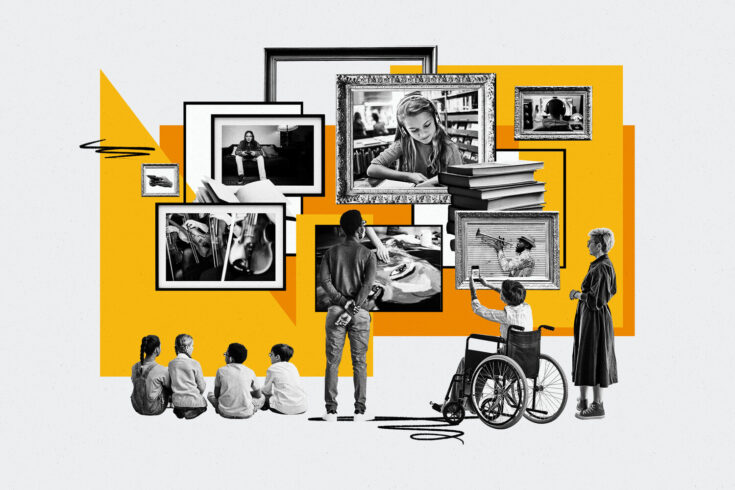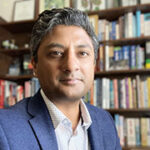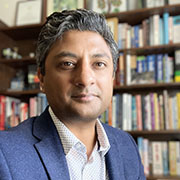It is a wet Friday evening at the start of November. After a familiarly hectic week, I am listening to the Rediscovered Composers concert on Radio 3 while preparing dinner for the family. I am drawn to a piano concerto by Julia Perry, an African-American classical composer from Lexington, Kentucky.
Perry is a mid-20th century ‘forgotten composer’. Much of her work sits in a couple of archives in the US and is not being readily published. It is now being highlighted by classical singer and tutor Michael Harper’s Arts and Humanities Research Council (AHRC)-funded research, in partnership with the BBC. The piece is performed by Indian-American pianist Kunal Lahiry, who is a BBC New Generation Artist.
The concerto is minimalist, even delightful, but bold in its meandering journey. My interpretation of it would have been different had it not been set in the appropriate historical context of racial injustices in 1960s America that so influenced Perry, and of her own personal embracing of her race and pride in her heritage.
Over dinner, our primary school-age children asked simple yet meaningful questions about their own mixed-race heritage and American history. This was no major enlightenment, but a family evening that I will remember and, I suspect, so will my children. When we engage with research in the right ways at the right time, it changes who we are as humans.
AHRC invests in rich, diverse and creative research
This year AHRC is helping the BBC to mark its centenary by encouraging people to get involved in research projects exploring its impact over time. They include projects on immersive technology, Asian voices on the BBC, and lost documentaries from the 1960s. Our longstanding AHRC-BBC New Generation Thinkers scheme, which has launched the media careers of 120 early career researchers since 2010, continues to create opportunities on radio and screen for emerging talent in the arts and humanities, including opportunities to present the New Thinking Podcast.
Partnerships right across the creative sector
Putting research and development at the heart of partnerships with lots of small creative businesses such as independent game studios, gig venues, and fashion designers is another way we are achieving some exciting impact.
I see this as a huge step away from ‘business as usual’. It encourages partnerships to invest in original thinking, the stuff that is not obvious, even uncertain, with the reassurance of being grounded in world-leading research.
It’s getting us as a society ready to take part in a more creative future.
It’s what Clwstwr, a research and development (R&D)-led programme of innovation and collaboration, is doing to build and sustain the emerging Welsh screen industry.
Another example is Future Fashion Factory in Leeds, a regionally-based programme transforming the fashion industry’s capacity for creative innovation. It is training next-generation designers capable of exploiting new textile and digital technologies. To give a sense of scale, the direct contribution of the UK fashion industry in 2017 – including fashion suppliers and retailers as well as designers – to the UK economy was estimated at £32.3 billion, and the UK has an estimated 2.29 million creative industries jobs.
How does creative research have societal impact?
I recently spent a day listening in with some of the projects involved in the pilot phase of our health disparities programme. One of the projects is ‘Prescribe Heritage Highlands’, based at University of the Highlands and Islands.
Museums and ranger services in the Highlands of Scotland have been delivering cultural and nature-based programmes to promote mental wellbeing and address health inequalities.
The project will also examine ways of increasing access to cultural and natural heritage schemes in rural areas to which people in need of help can be referred with a ‘social prescription’.
This fits with the findings of an all-party parliamentary group report, Creative Health: The Arts for Health and Wellbeing, which found that contact with the arts helps to mitigate the effects of an adverse environment.
What our evidence shows is that investing in culture, nature and community projects can have impact. It can influence maternal nutrition, perinatal mental health and childhood development. It can shape educational and employment opportunities and tackle chronic distress. And it can promote self-expression and empowerment to help overcome social isolation. It is also worth noting evidence that shows that “tackling the health inequalities facing local authorities with ‘left behind’ neighbourhoods and bringing them up to England’s average could add an extra £29.8 billion to the country’s economy each year”.
What are cultural, natural and community assets?
These cultural, natural and community assets can be anything from wild swimming and blue-space recreation groups, to training volunteers to work with arts and nature in schools, to using prehistoric cultural heritage sites to enhance mental health wellbeing in marginalised communities.
Linking patients in primary care with sources of support within their communities makes intuitive sense.
What next for our programme?
Next year, we will be looking to fund some pilot schemes that will support national approaches to reducing health inequalities by integrating community asset hubs with local health and care systems.
These community asset partnerships will include community representation, and I hope this real-world experience will help to improve health systems research and design. I also hope to see the development of financial models that will keep these beneficial community assets going beyond the life of the funded projects.
A larger purpose
Our larger purpose is to promote the spread and adoption of collaborative, cross-disciplinary and community-led research that advances our understanding and delivers societal benefits.
The link between people experiencing the worst disparities and those most at risk of poor health has deepened during these uncertain times.
The COVID-19 pandemic taught us that understanding the behavioural and cultural impact of shocks and how they can be avoided and reduced requires a human-centred approach to being prepared.
We need to build personal resilience, but in turn also to create a robust environment capable of withstanding the shocks of an event like the pandemic. I feel that community, cultural and environmental projects are fundamental to that.




